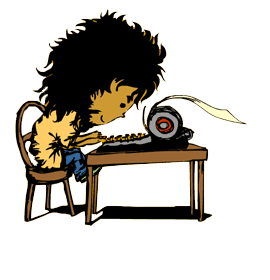Serendib Magazine (c) 2008.
The mystery of red soil in Sri Lanka's deep south.

"We've come to see the aliens," we say to the boys on bicycles. And to the lady selling kola kanda . And to the talkative man at the bathkade. If we don't find any alien stories, the very least we can do is plant a few.
Everyone grins knowingly, but no one dishes out the red dirt. Either the Martians have taken over the entire village and replaced them with friendly replicas or there are no aliens in Ussangoda. The latter is harder to believe.
Our imaginings of Mars are coloured by science fiction. Quite literally painted over with an orangey-red brush. It's the same colour that greets us on arrival at Ussangoda. Red brick soil, lightly carpeted in grass and moss, sprinkled with tiny blue flowers. An open plain panorama fettered only by thorny shrub and rare, medicinal plants. All this next door to one of the deep south's most unusual beaches.
After scrambling through the bush trail, marvelling at the shapes of the insects and the colours of the birds; after you are greeted by rocks leading to a beach of crimson crabs and sandy patches of otherworldly purple; after you have stumbled into the valley where red soil and the bronze beach meet, you are forced to upgrade unusual to unreal; unreal to unbelievable.
This extraterrestrial landscape, known locally as "Rathupas Thalawa" or red soil plain, was probably caused by a meteorite many millennia ago. That would explain the rocky caverns and why the soil is red here and nowhere else. The other explanation would be a unit shift, where prehistoric volcanic activity deposits soil from the earth's crust.
Running this shining, crystal like dirt through my fingers, I decide to go with the meteorite theory. It would explain the high nickel content in the serpentine soil and the sparse vegetation that grows from it. And the unlikely existence of fresh water, a few metres below the surface, this close to an ocean.
Other explanations range from the far fetched to the mythic. Some suspect that this could've been an oil dumping ground for the British in the 19th century. Others suggest that this was one of Ravana's ancient airports, from where he launched his peacock chariot.
Immortalised in the Ramayana as the ten-headed demon king of Sri Lanka, Ravana's presence in the deep south is palpable. Further east are a proliferation of places named after his conquest, Sita. His ancient kingdom, Lankapura, is believed to be submerged off the nearby coast. The airport at Ussangoda is said to have been scorched to the ground Ravana's nemesis, a certain fiery-tailed simian named Hanuman, leaving only a plain of red soil.
Today, the monkeys at Ussangoda are more sedate. According to a World Conservation Union study, they share the surroundings with 25 species of mammal,
49 reptiles, 17 amphibians and 184 birds. The nearby waters are populated by 52 fish species, 31 corals, 50 crabs and 134 species of marine invertebrates. Not bad for a barren landscape.
While the earth is suspected to be rich in minerals, there is also a suspicion that began with British archaeologist, Wayland, of the site's prehistorical value. Sporadic excavations since the 1970s have unearthed tools and dwelling sites dating to the Mid-Paleolithic and Mesolithic periods. Plans are afoot to uncover the secrets of this soil, provided the hoteliers don't get here first. Perhaps, we missed the aliens by a mere 125,000 years.
Or maybe they were there all along. Hiding amidst herbaceous shrubs or under beautiful rocks. Maybe they left messages in the dirt that no one got. Maybe they shapeshifted, transformed into scarlet butterflies and maroon starfish and watched us in disguise.
Looking across this silent field of mystery, myth and undiscovered treasure, another theory comes to light. In this burial ground of cosmic secrets, untouched by prying humans, the real aliens could just as well be us.




Comments